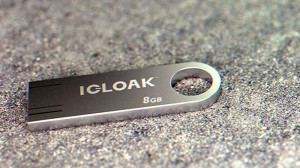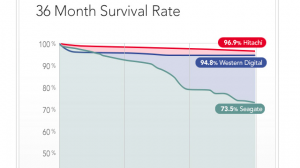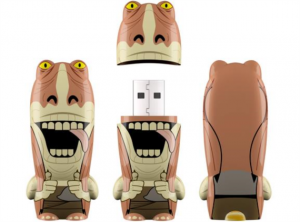 The iCloak Stik is a promised to be a portable anonymity tool, turning any computer into a private, safe, and untrackable way of accessing the internet. It’s basically just software on a USB flash drive that boots when you reboot your 64-bit Windows or Mac computer, and promises to completely mask your IP address (using TOR or I2P), let you choose what country you’d like to appear to be surfing the ‘net from, creates a random MAC address for your computer (the physical ID of your network interface circuit), browse anonymously, wipe all trace of your online activity, prevent malware/spyware infections, and encrypt usernames and passwords. Oh, and you can store files on the USB stick too (but I don’t think these get encrypted). It’s really like booting into a separate, scaled-down OS – you won’t be using your normal computer apps.
The iCloak Stik is a promised to be a portable anonymity tool, turning any computer into a private, safe, and untrackable way of accessing the internet. It’s basically just software on a USB flash drive that boots when you reboot your 64-bit Windows or Mac computer, and promises to completely mask your IP address (using TOR or I2P), let you choose what country you’d like to appear to be surfing the ‘net from, creates a random MAC address for your computer (the physical ID of your network interface circuit), browse anonymously, wipe all trace of your online activity, prevent malware/spyware infections, and encrypt usernames and passwords. Oh, and you can store files on the USB stick too (but I don’t think these get encrypted). It’s really like booting into a separate, scaled-down OS – you won’t be using your normal computer apps.
In case you haven’t been following the news, it turns out the NSA has been spying on Americans regardless of whether or not they’re suspected of doing anything wrong. The latest Snowden leak showed that of 160,000 intercepted messages, only 10% were from official targets. Devices like the iCloak are targeted at people who view this as a violation of their freedoms and fourth amendment rights. Of course, note that with Kickstarter, the names and cities of all backers is public information…so I wouldn’t be surprised that if you choose to be a backer, you’ll end up on an NSA watchlist somewhere. Paranoid? Not really. People who followed links to articles on Boing Boing about Tor and Tails ended up on such a list. Still, I figure by even writing about the iCloak I’ll get on that list…so I might as well buy an iCloak while I’m at it!




 Ladies and gentlemen, what you see here is perhaps the world’s first theft-proof USB drive…or at least a very theft-resistant one. I mean really, who’s going to want to steal one that’s designed to look like
Ladies and gentlemen, what you see here is perhaps the world’s first theft-proof USB drive…or at least a very theft-resistant one. I mean really, who’s going to want to steal one that’s designed to look like